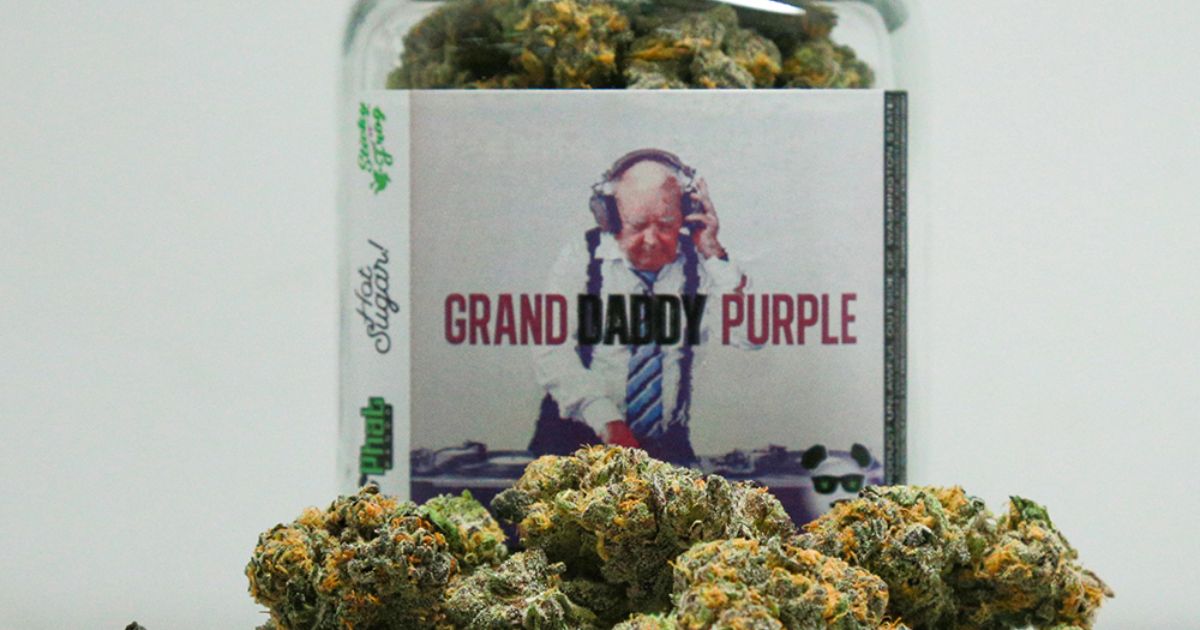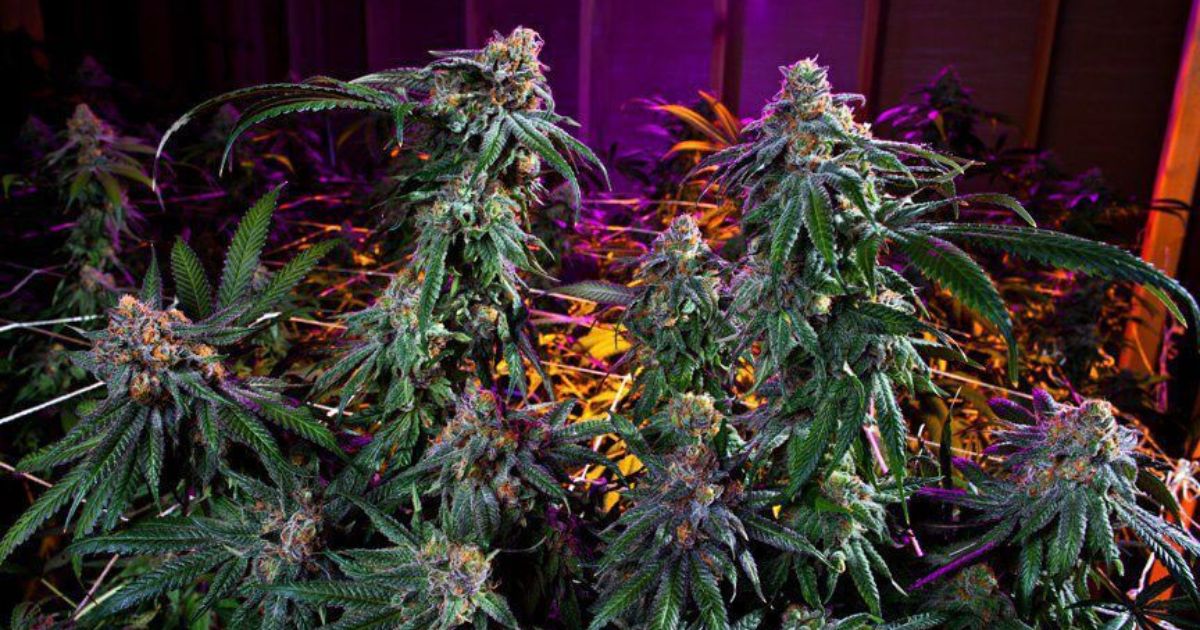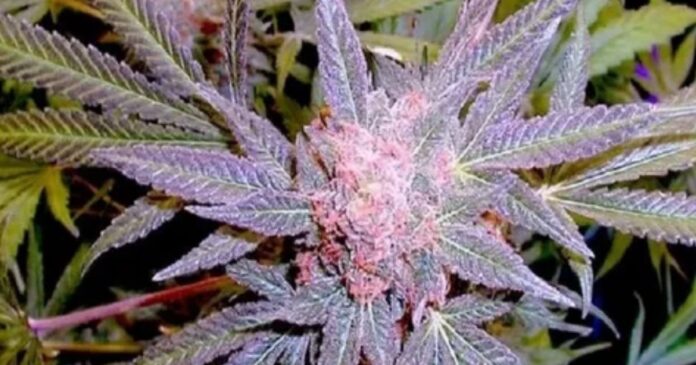When it comes to legendary cannabis strains, Granddaddy Purple (GDP) stands proudly at the top. Known for its deep purple buds, sweet grape-like aroma, and powerfully relaxing effects, this iconic indica has earned a loyal following among growers and smokers alike. But achieving that perfect batch of dense, frosty, purple-tinted buds doesn’t happen by accident; it requires the right genetics, proper care, and attention to detail from seed to harvest.
In this guide, we’ll walk you through everything you need to know to grow the best Granddaddy Purple buds possible, from choosing authentic seeds to creating the ideal environment and harvesting at just the right time. Whether you’re a seasoned cultivator or a beginner ready to try your hand at GDP, these tips will help you bring out the rich colors, flavors, and potency that make this strain a true classic.
What Makes Granddaddy Purple Special?
Granddaddy Purple, often called GDP, is more than just another cannabis strain; it’s an icon in the world of indicas. Created by breeder Ken Estes in 2003, GDP is a hybrid of two fabled strains: Purple Urkle and Big Bud. This powerhouse combination gave birth to a plant celebrated for its stunning purple hues, dense bud structure, and unmistakable grape-like aroma that fills the room as soon as the jar is opened.What truly sets GDP apart is its unique blend of effects. It is renowned for its tranquil and profoundly calming effects. It’s a favorite for evening use, helping users unwind after long days while easing stress, pain, and insomnia. Exploring The Benefits Of Weed And Cannabis It’s sweet, berry-flavored smoke also makes it a treat for the senses, attracting both medical patients and recreational users.

From a grower’s perspective, GDP is equally special. Its heavy-yielding genetics from Big Bud and vibrant purple tones from Purple Urkle make it both rewarding and visually striking in the grow room. Whether you’re chasing bag appeal, therapeutic benefits, or pure relaxation, Granddaddy Purple remains a classic that has stood the test of time and continues to captivate cannabis lovers worldwide.
Selecting High-Quality Seeds
The foundation of exceptional granddaddy og strain buds starts with high-quality genetics. Choosing feminized seeds from a reputable seed bank ensures genetic stability and eliminates the risk of male plants, which can reduce yields by pollinating females. Look for seeds from trusted sources like Blimburn Seeds, Royal Queen Seeds, or other established breeders that guarantee feminized, high-potency GDP seeds.
Tips for Seed Selection:
- Verify Authenticity: Ensure the seeds are labeled as Granddaddy Purple (not a knockoff strain) and come from a reliable source with positive reviews.
- Check Reviews: Platforms like Royal Queen Seeds feature customer feedback, such as Sydney’s review praising gran daddy purp germination rate and vigorous growth, which can guide your choice.
- Feminized Seeds: Opt for feminized seeds to maximize bud production, as these guarantee female plants that produce the resinous flowers you’re after.
- Freshness: The germination rate is higher for fresh seeds. abhayarishta uses in marathi Avoid old or improperly stored seeds.
Once you’ve sourced quality seeds, store them in a cool, dark, dry place until you’re ready to germinate.
Germination and Propagation
Healthy plants result from successful germination. Granddaddy Purple seeds are relatively easy to germinate, but following best practices ensures a high success rate.
Germination Process:
- Soak the Seeds: Place your gdp weed strain seeds in a glass of distilled water or between damp paper towels for 24–48 hours. Maintain an undisturbed atmosphere with a temperature range of 70°F to 85°F (21 to 29°C).
- Monitor Taproots: Check for taproots (small white roots) emerging from the seeds. Once taproots are 1–2 cm long, they’re ready to be transplanted.
- Transfer to Medium: Carefully move seeds to a pre-moistened growing medium, like tiny pots with light, well-draining soil or a seedling tray. Or a coco coir mix. Plant seeds about 0.5 cm deep with the taproot facing down.
- Maintain Conditions: Keep the medium moist (not drenched), and maintain a high temperature between 70 and 80°F (21 and 27°C). Humidity level between 60 and 70%. To keep moisture in, Tips for Growing the Popular Slurricane Strain at Home use a plastic cover or humidity dome.
Within 3–7 days, you should see sprouts emerge. At this stage, provide gentle light (e.g., a low-wattage LED or fluorescent light) for 18–24 hours daily to encourage healthy seedling growth.
Vegetative Growth
The vegetative phase is where your Granddaddy Purple plants build the structure needed to support large, dense buds. This stage typically lasts 4–8 weeks, depending on your desired plant size and growing space. gdp weed is known for its vigorous vegetative growth, responding well to training techniques that maximize yields.
Key Tips for Vegetative Growth:
- Lighting: Use high-quality LED grow lights or high-pressure sodium (HPS) lights to provide 18–24 hours of light daily. Aim for 600–1000 µmol/m²/s of photosynthetically active radiation (PAR) for optimal growth. Keep lights 18–24 inches above the canopy to prevent light burn.
- Nutrients: Feed plants a nutrient formula high in nitrogen (N) to support leafy growth. A balanced vegetative nutrient mix (e.g., NPK 3-1-2) works well. Start with half-strength nutrients to avoid burn and gradually increase as plants mature.
- Training Techniques: g.d.p strain responds exceptionally well to low-stress training (LST) and topping. LST involves gently bending branches to create an even canopy, while topping consists of cutting the main stem to encourage bushier growth. These methods increase light exposure to lower bud sites, boosting yields.
- Support: As GDP plants develop, their branches may need support due to the weight of future buds. How to Grow Your Own Chocolope Strain Cannabis Install stakes or trellis netting early to prevent branch snapping.
- Environmental Conditions: Maintain temperatures between 70–80°F (21–27°C) and humidity at 50–60%. Ensure good airflow with fans to prevent mold and strengthen stems.
Monitor plants for pests or nutrient deficiencies (e.g., yellowing leaves or stunted growth) and address issues promptly. GDP’s indica genetics make it resilient, but overwatering or overfeeding can cause problems like nutrient lockout.
Flowering Phase

The flowering phase is where granddaddy strain develops its iconic purple buds. This stage lasts 8–10 weeks indoors and typically concludes by early October for outdoor grows. Proper light, nutrients, and environmental control are critical to maximizing bud quality.
Flowering Best Practices:
- Light Cycle: Switch to a 12/12 light cycle (12 hours of light, 12 hours of uninterrupted darkness) to trigger flowering. Use a timer to maintain consistency.
- Lighting Intensity: Increase light intensity to 800–1200 µmol/m²/s to support bud development. Ensure lights cover the entire canopy evenly.
- Nutrients: Transition to a bloom-specific nutrient formula high in phosphorus (P) and potassium (K) (e.g., NPK 1-3-4). Reduce nitrogen to prevent excessive leafy growth. Monitor for nutrient burn (brown, Royal Queen Seeds: The Ultimate Guide for Cannabis Growers crispy leaf tips) and adjust as needed.
- Temperature and Humidity: Lower temperatures to 65–75°F (18–24°C) to enhance purple coloration, as cooler temperatures stimulate anthocyanin production. Keep humidity at 40–50% to prevent mold, especially given GDP’s dense buds.
- Pruning: Remove lower leaves and branches with minimal light exposure to enhance ventilation and lower the likelihood of mold or mildew growth. granddaddy purple marijuana Be cautious not to over-prune, as this can stress the plant.
- Pest and Mold Control: Inspect buds regularly for pests or mold, especially in humid climates. Use organic pest control methods (e.g., neem oil) if needed, and ensure good ventilation.
- Flushing: During the last 1-2 weeks before harvest, flush plants with plain water (pH 6.0–6.5) to remove excess nutrients. This improves bud flavor and smoothness. One grower reported a TDS spike to 800 PPM during flushing, indicating nutrient buildup, so monitor water quality.
During flowering, GDP’s buds will develop a dense layer of trichomes, vivid orange pistils, and vivid purple tones. The sweet, grape-like aroma will become more pronounced, filling your grow space with a delightful scent.
Harvesting
Harvesting at the right time is crucial for maximizing potency and flavor. granddaddy purp strain is typically ready to harvest after 8–10 weeks of flowering indoors or around early October outdoors.
How to Determine Harvest Time:
- Trichome Color: Use a jeweler’s loupe or microscope to check trichomes (the tiny, mushroom-shaped resin glands on buds). Harvest when most trichomes are milky white with 10–20% turning amber for a balanced effect (more amber for a heavier, sedative high).
- Pistil Color: Look for 70–90% of the pistils (orange hairs) to have darkened and curled inward, signaling ripeness.
- Bud Density: GDP buds should feel dense and sticky to the touch, with a strong aroma.
To harvest, cut plants at the base or remove individual branches. Trim away fan leaves and excess sugar leaves, leaving the buds intact. Common Mistakes That Stop Buds from Flowering Handle buds gently to preserve trichomes.
Drying and Curing
Proper drying and curing are essential for enhancing the flavor, potency, and smoothness of strain gdp buds. This process can take 2–4 weeks, but it is worth the effort for top-shelf results.
Drying Process:
- Hang Buds: Hang trimmed branches upside down in a dark, well-ventilated space with temperatures of 60–70°F (15–21°C) and humidity of 45–55%. Use fans for gentle air circulation, but avoid direct airflow on buds.
- Dry for 7–14 Days: gdpc strain are ready when small stems snap cleanly rather than bend. Avoid over-drying, which can degrade terpenes and flavor.
- Monitor Conditions: Use a hygrometer to ensure consistent humidity and prevent mold.
Curing Process:
- Place in Jars: Transfer dried buds to airtight glass jars, does himcolin gel increase size filling them about 75% complete to allow air circulation.
- Cure for 2–4 Weeks: Store jars in a cool, dark place (60–70°F, 15–21°C) with 58–62% humidity. Use humidity packs (e.g., Boveda) to maintain optimal moisture levels.
- Burp Jars: Open jars daily for the first week to release moisture and prevent mold. Reduce burping to once every few days in weeks 2–4.
- Check Aroma and Texture: Properly cured GDP buds will have a smooth, sweet, and fruity aroma with a slightly sticky texture.
Curing enhances the grape and berry flavors, making GDP’s signature terpene profile (myrcene, caryophyllene, pinene, limonene, and linalool) shine through.grandaddy purp strain also improves the smoothness and reduces harshness.
Additional Tips for Success
- Soil Choice: GDP thrives in super soil rich in organic nutrients, which minimizes pH issues and nutrient lockout. Alternatively, use a well-draining soil mix or hydroponics for faster growth.
- Outdoor Growing: If growing outdoors, choose a bright location with six to eight hours of daily direct sunlight. Protect plants from excessive rain to prevent bud rot.
- Pot Size: Use large pots (10–20 gallons) for outdoor grows to support GDP’s vigorous root system and maximize yields, as one grower reported 941 grams per plant using large pots.
- Terpene Enhancement: To boost the fruity, grape-like aroma, vaporize GDP at low temperatures (350–380°F, 175–195°C) to preserve delicate terpenes like myrcene and limonene.
- Pest Management: Regularly inspect plants for pests like spider mites or aphids. Use organic solutions like neem oil or introduce beneficial insects like ladybugs for outdoor grows.
Common Mistakes to Avoid

- Overwatering: GDP prefers slightly dry conditions over soggy soil. Only water when the top inch of the soil seems dry.
- Overfeeding: Excessive nutrients can cause burn or lockout. Start with low doses and increase gradually.
- High Humidity: Dense GDP buds are prone to mold in high humidity (>50% during flowering). Use dehumidifiers if needed.
- Harvesting Too Early: Cutting buds before trichomes are mostly milky can reduce potency and yield.
- Improper Curing: Skipping or rushing curing can result in harsh, less flavorful buds.
Expected Yields and Potency
When grown with care, grandaddy purp can produce impressive yields:
- Indoors: 450–500 g/m² after 8–10 weeks of flowering.
- Outdoors: 500–600 g/g/ g/plant, with some growers reporting up to 941 g/g/g/ g/plant in optimal conditions.
The buds typically contain 17–23% THC, delivering a potent, relaxing high ideal for evening use. The combination of myrcene (sedative), caryophyllene (anti-inflammatory), and limonene (mood-elevating) creates a well-rounded effect profile suitable for medical and recreational users.
Why Granddaddy Purple Stands Out
Granddaddy Purple’s enduring popularity stems from its stunning appearance, delightful flavor, and powerful effects. Its deep purple buds, coated in shimmering trichomes, are a visual treat, while the sweet, grape-like aroma and relaxing high make it a favorite for unwinding or managing conditions like insomnia, chronic pain, and stress. By following the steps outlined in this guide, selecting quality seeds, optimizing growth conditions, and carefully harvesting and curing, you can produce GDP buds that rival those found in top dispensaries.
Whether you’re growing for personal use or aiming to impress fellow cannabis enthusiasts, mastering the cultivation of grand daddy purp is a rewarding endeavor. With patience and attention to detail, you’ll be rewarded with frosty, potent, and flavorful buds that embody the essence of this iconic strain.
Conclusion
Growing Granddaddy Purple to its fullest potential is both an art and a science. This legendary strain rewards those who take the time to choose the right genetics, create the ideal growing environment, and master the harvesting and curing process. The payoff? Dense, frosty buds bursting with rich purple hues, sweet grape aromas, and deeply relaxing effects that have made GDP a favorite for decades.
Whether you’re a home grower seeking that perfect personal stash or an experienced cultivator aiming for top-shelf quality, the key lies in patience, precision, and care. By following the proper steps from seed selection to curing, you can bring out the very best in grandaddy purple strain and enjoy the timeless beauty and potency of one of cannabis’s most iconic strains.Because at the end of the day, growing GDP isn’t just about cultivating a plant, it’s about crafting an experience worth savoring.
FAQ
How long does Granddaddy Purple take to flower?
Granddaddy Purple typically flowers in 8–11 weeks, depending on growing conditions and whether it’s cultivated indoors or outdoors.
Can Granddaddy Purple be grown indoors?
Yes! GDP thrives indoors when given consistent lighting, controlled temperatures, and proper ventilation, making it easier to bring out its vibrant purple color.
Does every Granddaddy Purple plant turn purple?
Not always. The purple hue appears best when the plant is true to its genetics and grown in cooler nighttime temperatures during late flowering.
What’s the average yield for Granddaddy Purple?
GDP is known for heavy yields on average; indoor growers can expect 450–500g per square meter, while outdoor plants can produce even more.
What effects can I expect from smoking Granddaddy Purple buds?
Grandaddy purple delivers deep relaxation, stress relief, and a calming body high, making it a go-to strain for evening use, insomnia, and pain relief.




